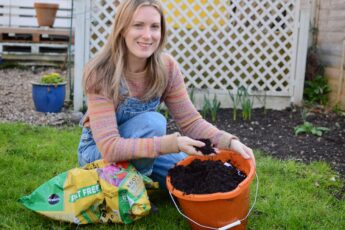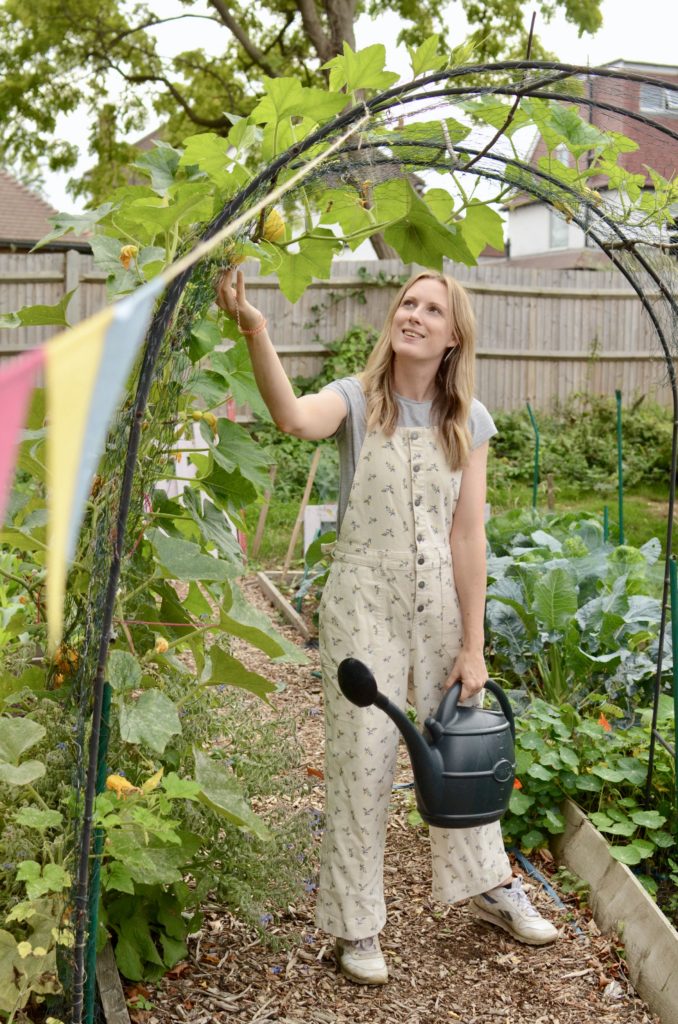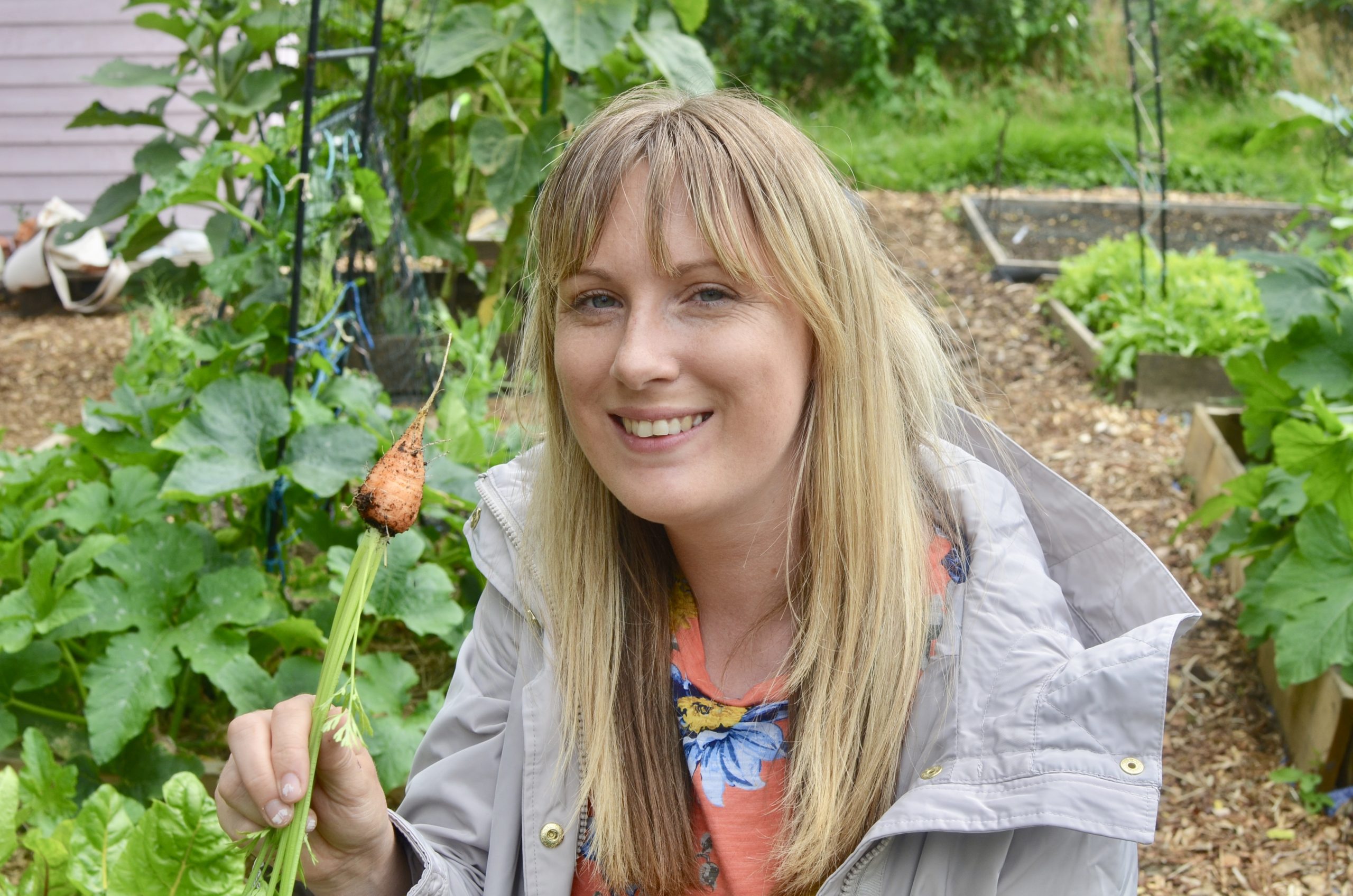
Carrots are such a staple part of any vegetable garden, especially here in the UK. Carrots are one of the UK’s top 5 favourite vegetable. Growing them can be a bit of a pain though. In my first year on the plot, I struggled with most of the carrots coming out forked, or eaten by carrot fly!
Through trial and error, I have now successfully been able to grow a fair few carrots and am excited to be able to share what I’ve learned with you all!
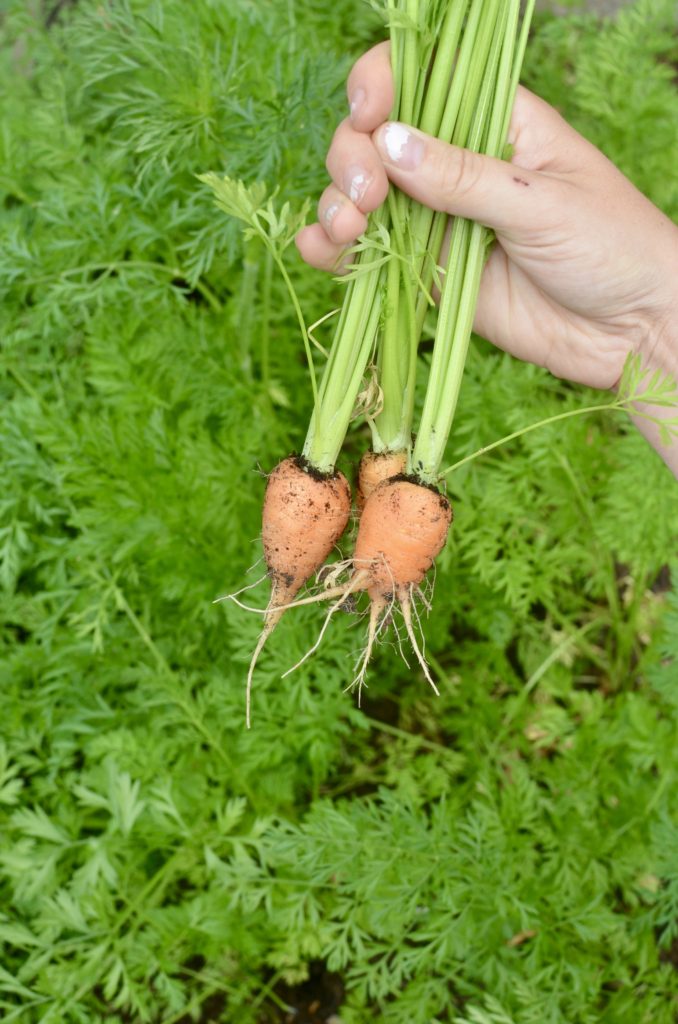
Why Grow Carrots?
Carrots are a root vegetable, which basically means they produce an enlarged root under the ground (in this case, the carrot) which we then pull up and eat!
Carrots are full of vitamin A, vitamin K, Calcium and fibre. Not only that, they are absolutely delicious and incredibly versatile ingredients. You can roast, boil, steam, fry and even bake them!
How to Grow Carrots
First of all, it’s important to get the soil right when growing carrots. Carrots fork when they hit something in the ground that gets in their way, like a rock. So sieve your bed thoroughly first. It also helps to add some horticulture sand to the soil to help with drainage as well as making a lovely smooth base for your carrot to grow down into.
Sow carrots directly outside. Some varieties can be started under a cloche as early as February. I tend to start mine in April.
Make some drills about a foot apart from each other and thinly sow your carrot seeds. Once they start to grow, thin them out so that each carrot has some room to grow and get bigger. 2-3 inches between each seedling is about right.
Carrots take between 12-16 weeks to form, depending on which variety you have chosen to sow. Make sure to feed them with a liquid seaweed feed as they get going, encouraging them to grow nice and strong!
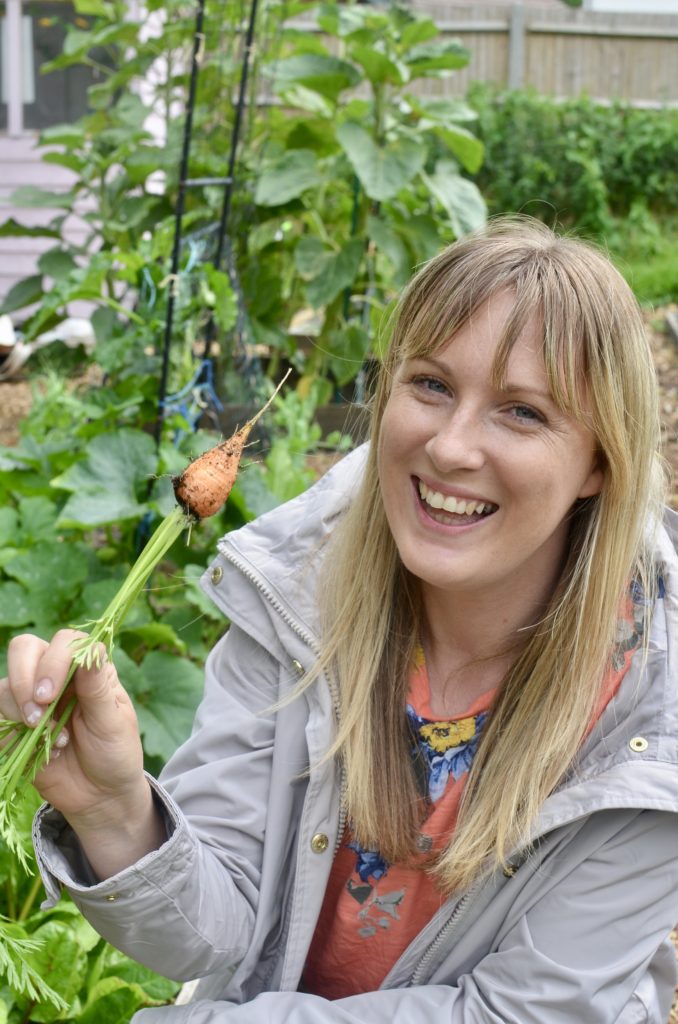
What can Go Wrong with Carrots?
Carrot fly is the biggest culprit of a failed batch of homegrown carrots. They can smell carrots from over a mile away, so be careful not to run your hands over the carrot tops as they grow.
When thinning out, try snipping away seedlings with scissors instead of pulling them up, as this will discourage the carrot smell to get out!
If carrots fly is a big problem, try sowing in hanging baskets, or pots high off the ground. The flies can’t fly that high, so keeping them off the ground will help keep them away!
Carrots can fork in soil that has a lot of stones or rocks in it, so be sure to sieve the soil thoroughly before sowing.
Different varieties grow different lengths. Chantenay carrots are short, so don’t expect long impressive carrots (They do taste amazing though!) Go for Nantes for a nice long, Peter rabbit style carrot!
A word of Warning
Colourful, rainbow carrot seeds are all the rage right now and look beautiful on an instagram feed. However, in my experience, they don’t taste very good. Looks aren’t everything!



